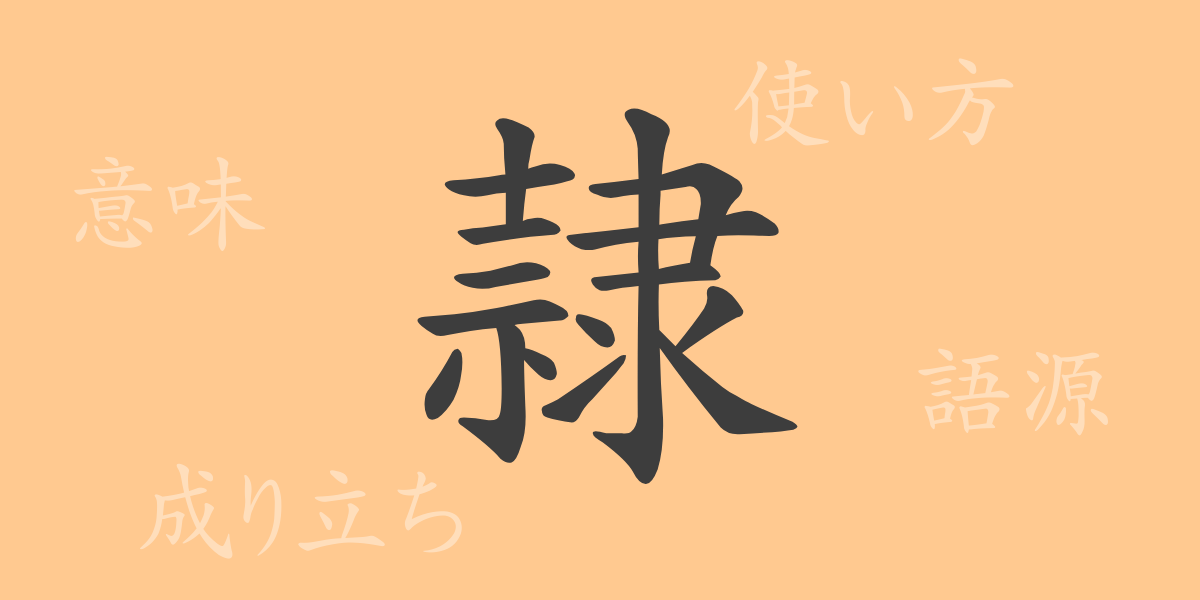The rich expressions of the Japanese language incorporate many kanji characters. Among them, the kanji “隷 (rei)” is a unique presence listed in the common use kanji table of Japan. In this article, we delve into the origins, meanings, usage, and even idioms and phrases related to this kanji. By unraveling the history and culture embedded in each character, let’s explore the world of “隷 (rei)” in depth.
Origins of 隷 (rei)
The kanji “隷 (rei)” began its history as a character representing slaves in ancient China. It has origins as a pictograph, originally mimicking the shape of a person bound with ropes. Over time, its form became abstracted, settling into the current shape of “隷 (rei)”. This kanji strongly reflects the ancient class system, with the character’s shape mirroring aspects of society.
Meaning and Usage of 隷 (rei)
The kanji “隷 (rei)” means “to obey” or “to be subordinate”. Additionally, it refers to a style of calligraphy known as “隷書 (reisho)”. This character is often used in words that depict subordination to others or belonging to something.
Readings, Stroke Count, and Radical of 隷 (rei)
The kanji “隷 (rei)” is used in various idioms and contexts due to its unique shape and meaning. Let’s also focus on its readings, stroke count, and radical.
- Readings: On’yomi (音読み) is “rei”, no kun’yomi (訓読み)
- Stroke Count: 15 strokes in total
- Radical: 门部 (monnobu)
Idioms, Phrases, and Proverbs Using 隷 (rei) and Their Meanings
Idioms, phrases, and proverbs containing “隷 (rei)” have deep historical and cultural meanings. Here are some examples and their meanings:
- 隷従 (reijuu): To obey the control or orders of others.
- 隷属 (reizoku): To belong to another country or organization and lose freedom.
- 隷書 (reisho): A style of Chinese calligraphy derived from the small seal script unified during the Qin Dynasty.
Summary of 隷 (rei)
The kanji “隷 (rei)” has been used in many contexts from its origins to the present day. Its usage ranges from meanings related to slavery and subordination to terms referring to a style of calligraphy. Through this article, we hope you have gained some insight into the historical background and cultural impact of the kanji “隷 (rei)”. Let’s continue to explore the profound charm of kanji in the Japanese language.

























